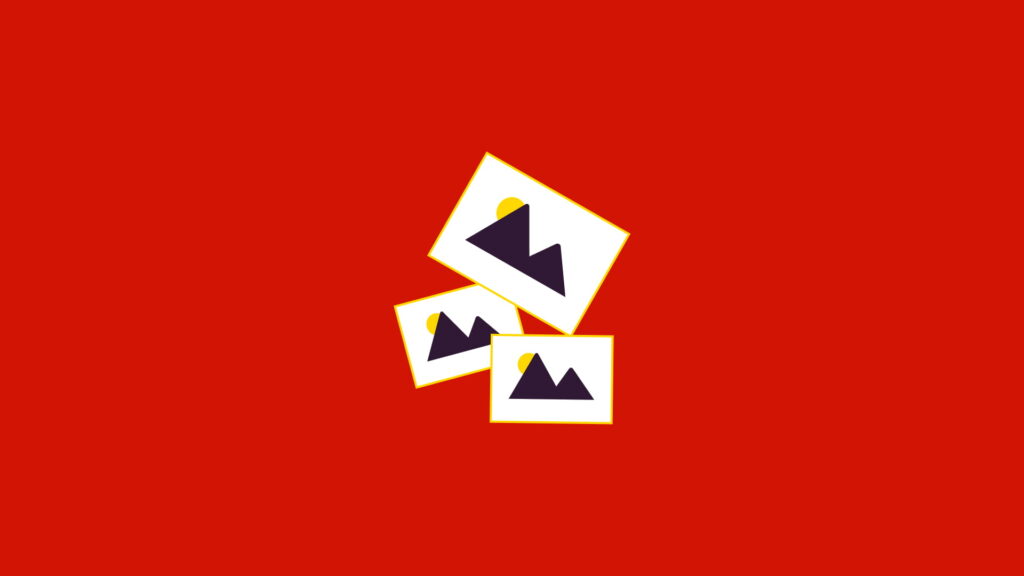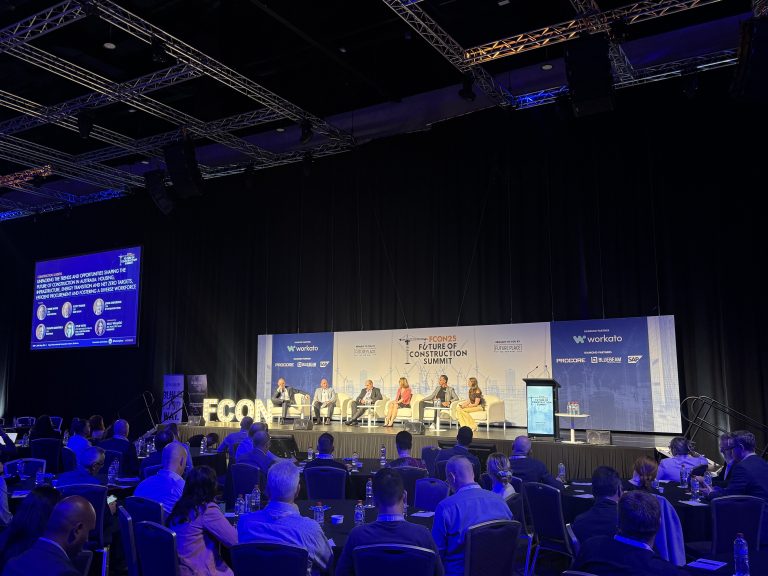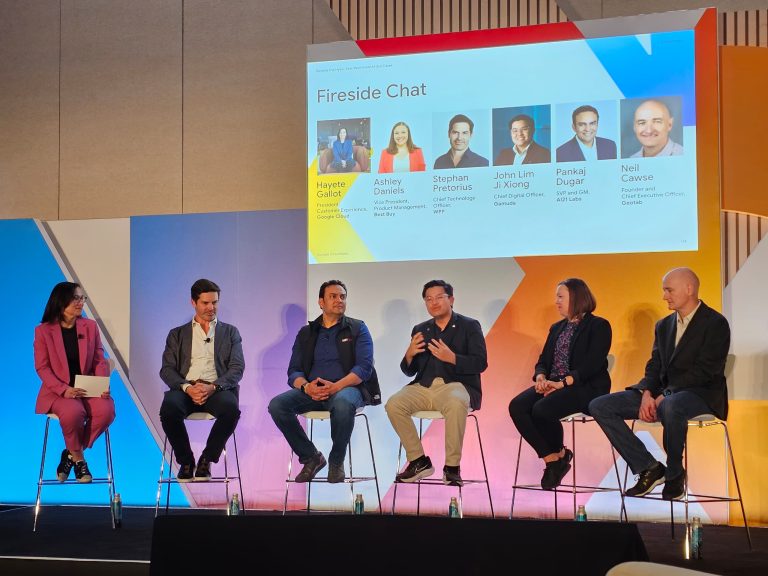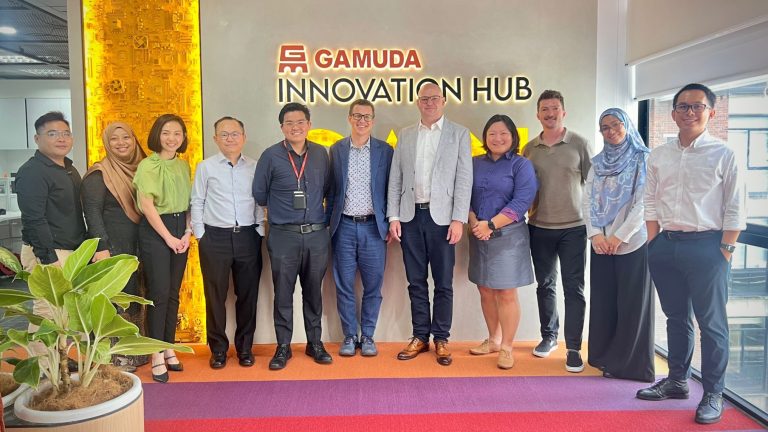It has been a busy year for Lim Jia Jun, the sole developer of the asset management system currently in use in Gamuda Building Unit (GBU). Jia Jun created an innovative solution to enable easy tracking of assets across different project sites. It’s a low-code mobile app that lists all the construction assets in GBU and lets users request for assets that they need.

The app’s initial launch was in March 2021, and it has been fully adopted across all 10+ sites in GBU by May 2021. Jia Jun has previously shared about the low-code technology, Microsoft PowerApps, that allowed him to develop this innovation in less than three months by himself. You can check out the recording of the 9th edition of GET’s weekly Disraptor Clubhouse here if you missed it. Do join us on Discord next time, where we come together for a casual sharing session every week!
The GET team sat down with Jia Jun recently to further discuss the app, how he got to the solution, and what other innovations he is brewing up next.
This interview was edited for length and clarity.
Can you tell us about yourself and what you do in Gamuda?
I have been with Gamuda since January 2021, after graduating from University Malaya with a degree in civil engineering. I joined the Project Management Building Department in Gamuda Building Unit (GBU) as a project engineer to drive digital initiatives.
My first task was to digitalise the process of updating the inventory for GBU assets, such as the lifting equipment, surveying equipment, motor vehicles and so on. There were approximately 10 project sites under GBU, and the assets were all available to be shared among them.
How were the assets being managed at that time?
When I first joined the department, their asset management system was basically a WhatsApp group chat of around 30 users! Two or three persons-in-charge (PIC) from each project site would liaise among themselves in the group. At the end of each project, the PIC for a particular site would list all the remaining assets and post it in the chat. Other people in the group are allowed to request for any item that they need to use from that list. If an item remains unclaimed for, then the PIC would arrange for it to be delivered to our warehouse.
What were you seeking to improve upon from the original system?
They wanted to systemise the asset management system properly. There was no organised record of assets available in GBU before this, which led to a procurement challenge of “Should I buy this item or can we just borrow it from another site?”
In order to better understand how the operations team worked, I went to visit the project sites and talked to the people who would eventually be the ones using the app. And through those visits, I found out that there had been occasions where some projects had unnecessarily purchased new items because they were not aware that those items were already available in another site!
Lim Jia Jun
It is a common problem with smaller assets such as the architectural machines or floor grinders; there was no centralised record-tracking for these items.
So GBU wants to improve their asset management system. How did you first try to tackle the problem?
At first, we requested for quotations from third-party construction material management providers. This would have been a quick and easy solution, which would suffice in smaller businesses since the fees tend to be charged based on the quantity of items that you have in the system.
For us, procuring a third-party solution would result in some difficulties as we wouldn’t be able to freely customise the workflow according to our needs. Since we have a lot of assets to track, it’s better to develop an in-house solution; it is both more cost-effective, and would be more friendly to fit in our needs.
Can you elaborate more on the workflows that third-party solutions use?
The process of tracking all the assets is actually quite complicated. With a third-party solution, a purchase order for an item would be recorded in both the project site that raised it and also in the HQ. However, there’s no feature to indicate that an asset that we ordered has been successfully delivered to the site. It does not account for situations where the asset fails to arrive, causing mistakes in the inventory system.
Another point to note is that consumable construction materials, such as steel, are not applicable in these third-party solutions. Consumables and non-consumables should actually be tracked a little differently, because we need to also track the quantities of consumables as they are being depleted.
So, what are the features currently available in your app?
The main objective behind this app is that everyone in GBU needs to know what item exists in the system, where it is located and who to contact in order to get it. This reduces unnecessary and redundant purchase of assets because the management knows that the items already exist and can be taken from another site. The system I’ve developed currently involves tracking reusable assets, which includes tracking the quantity and the record of their movements. Every month or so, I will update the data source with information from the GBU procurement team about newly-acquired assets.
As for the users, they can raise requests for the asset they want to use and the dates that they want it for. The app will display the dates of availability and the person-in-charge (PIC) of the site where the item is currently located. The requester then communicates with the PIC to arrange the logistics of transferring the asset in question. The app helps facilitate the workflow by sending an email to the PIC automatically when someone requests for an item under their site.



a. View all assets
b. View asset details
c. Request for asset
Once the requester receives the asset, they would have to go to the app and confirm that the asset has successfully arrived at the new site. The records would then be updated in the database to reflect the change in location and available dates. We also allow requesters to ask the PIC about the current condition of the asset. The app provides a platform for the PIC to upload pictures and textual descriptions of the asset’s condition – freely available for the other users to see for themselves.
All of that sounds pretty cool. What else is in the pipeline for this app?
So, like I mentioned earlier, there is also a need to track consumable construction materials used in the projects. I’m planning to add this workflow into the the app so that we can have a truly centralised view of all our assets.
Tracking consumables properly would help inform us if they are running out faster than the project is progressing, which we can estimate by looking at the Bill of Quantities. It would also help minimise waste; once a project is completed, other sites can request for their remaining materials which would have otherwise been thrown away.
Tracking machinery maintenance records and creating alerts when maintenance is necessary are also part of the development planning for this app.
What are some other stuff that you’re currently working on?
I’m working on another PowerApps application for tracking GIBS (Gamuda Industrialised Building System) precast panel installation on site with QR codes, which is an idea that came from the BIM Planner team. The amount of panels needed is fixed according to the modelling, and each panel has been manufactured for a particular location in the model. Each panel also has its own unique ID and QR code, so I can get the information about all the panels from GIBS and add it to a database. Thus, installation progress can be easily tracked by having the workers scan the QR codes with the app while installing the panels, which would automatically update the database. This app is now in the pilot phase and I’m collecting feedback from the end users as we go.
Another project that I’m currently developing is the Covid-19 access management app, to check each employee’s vaccination record and Covid-19 swab test results before allowing or denying them access to the site. The data involved in this project is a bit more dynamic, so I’m building a web app for it using Vue.js and Firebase. This is my first project that is not low-code; it involves writing JavaScript and some Python code in order to get the app and data workflow up and running.
Wow! What was your programming experience like before this?
None! I have not written code before this. The closest thing to writing code in PowerApps is to write Excel-like formulas. PowerApps has a very quick and direct workflow, which is why I chose to use it in the first place to for the asset management app.
However, PowerApps has its limitations such as only being able to read up to 5000 rows from the app’s database. As the Covid-19 access management project’s scope is much larger, we need more flexibility with the app. After consulting with the GET team, they introduced Vue.js and Firebase to me and these technologies are helping me deliver the solution that PowerApps could not.
You mentioned earlier that you have a degree in civil engineering, and now you’re writing JavaScript code to create a webapp. Where do you see your career progressing from here?
My main focus in the next few months is to keep developing these digital solutions: the Covid-19 access management app, the IBS precast panel installation tracker, and improving on this asset management system. I am currently learning JavaScript and Python in order to expand my capabilities, and I’m also learning more about cloud technologies that could allow me to deploy and scale these solutions smoothly.
All these projects are part of my portfolio since my job is to help the digitalisation efforts in GBU. My career aspirations now is to implement digital solutions to solve issues in the construction industry. There are still a lot of opportunities in this industry for further digitalisation, which would all contribute towards the goal of creating a more systematic approach to construction management.




